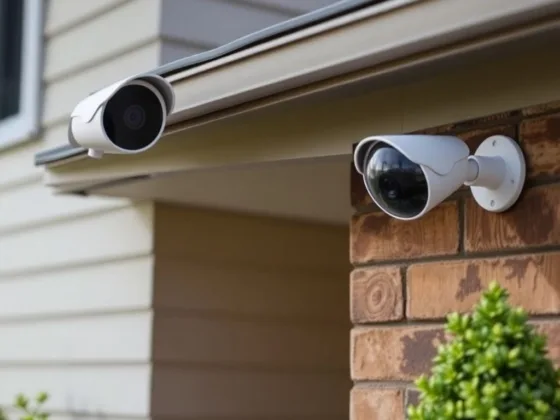Table of Contents Show
For many homeowners, having a home where you not only feel comfortable but also enjoy every aspect of it is simply a dream come true.

If you are one of those people who seek to achieve this goal, it is important to note that this is a very difficult mission and requires plenty of time, effort, and dedication.
However, with the right information and planning, you can easily redo your home in order to make it more stylish and fun for all occupants – starting with the 6 useful tips on how to redesign your home below.
1. Decide on the Features You Want
One of the first things you need to do is determine which features, functions, and appliances are worth keeping. After identifying what is useful in your home, it will be easier for you to come up with a design that suits your needs more properly.
This can be something as simple as creating an open floor plan out of your current layout – all you really need to do is find out which walls are the load-bearing walls and leave them be. On the other hand, it can also be as involved as introducing an entirely new feature in your home.
You can design your own garage if you don’t currently have one which can be a place to park your car, a home workshop, or even a small gym. Consider which features you need, want, and can work with, and then consider the best possible ways to incorporate them into your home.
Of course, it’s always advisable to focus on the things that will improve your life, and have a practical function to them as well. However, if your heart is set on having a pool or a playroom, then that is what you can and should go for.
2. Make it Energy Efficient
While the different things you might like during the redesign process are completely up to you, there are a few practicalities to keep in mind as well. One of those is creating an energy-efficient home design so that you don’t have to worry about the overall costs associated with it.
Energy efficiency can be achieved through several different ways, including installing better insulation in your home – ideally, an airtight wall and ceiling to keep hot air out during summer days or cold winds out during winter nights.
You should also look for products that are Energy Star certified, as these items are guaranteed to be energy efficient. If you’re not sure which items are the most energy-efficient, it’s always best to consult with an expert.
They can help you find the right appliances and heating systems for your home, as well as guide you on how to make your home more airtight overall. While not as fun as some other things, this is an improvement that will really pay off in the long run, as you will see a big difference in your energy bills each month.
Read Also:
3. Manage Noise Pollution
Another important thing that is incredibly practical, and that you’ll be happy you took the time to consider. When it comes to noise pollution, there are two main types of noise that you need to manage in your home.
The first is ambient noise this is the everyday noise that comes with living near a busy road or having next-door neighbors who like throwing parties every weekend.
While you might not be able to deter these noises completely, there are ways to muffle them. Installing heavy-duty insulation, for example, can help reduce the level of noise that comes into your home.
The second kind of noise pollution is between family members this could include loud arguing, kids blasting music in their room, or even having a pet being noisy when you’re trying to sleep.
If there are several different kinds of noise happening in your home, then it’s best to separate them – soundproofing the rooms where loud family gatherings tend to take place, or where loud music is likely to be played will help everyone get a good night’s sleep.
4. Create a Mood Board and Focus on the Layout
When doing the redesigning process, it is important to keep your mood board as updated as possible. By having an accurate visualization of what you are trying to achieve, you will make the design process much easier for yourself.
It is also great if you can include your family members in this process as it will give them a much better idea of what you are trying to achieve, and allow them to voice their opinions as well.
Making small tweaks along the way is much better than doing a sudden overhaul after you have finished your design, as it means that you were not ignoring any potential pitfalls throughout the process.
After having identified the features and appliances that need to stay, your next step is to focus on the layout of these items in order to create an environment that is not only stylish but also functional for all occupants.
The layout of your home will really affect the way you feel when you are inside it, so make sure that this is given due attention.
5. Think About Future Maintenance
Of course, there are many different changes you can make to your home to improve its décor and overall design. However, it’s also important to think about the future maintenance costs associated with those changes.
For example, adding a beautiful new extension or conservatory might seem like a good idea at first, but you should consider the costs involved with maintaining the roof, windows, and exterior in general.
You also need to keep in mind that these additions will change the layout of your home, meaning that you may need to start thinking about how you can improve your internal layout to accommodate them.
The materials you use when renovating your home are also important, as some may require more maintenance than others.
6. Draw Up a Timeline and Budget
After you have an idea of what you want to change in your home, it is time to consider what you can actually change and how long it will take before the new design is ready for use.
Doing this will help you create a timeline of tasks through which everyone can see and understand what is going on.
You also need to consider creating a budget for each of these tasks, as you will want the new design to have been completed before running out of money! When creating a budget, make sure that you include everything from the initial deposit, to any potential overspending during an emergency. As a general rule, no matter how much money you think you’ll need for a redesign, add an extra 20% to the total amount for unforeseen circumstances.
When it comes to designing our homes, there are many things that need to be considered, it may seem a bit overwhelming at first.
However, by considering the layout and future maintenance costs, drawing up a timeline and budget, and including your family members in the process, you can get the redesigning process off to a good start.











